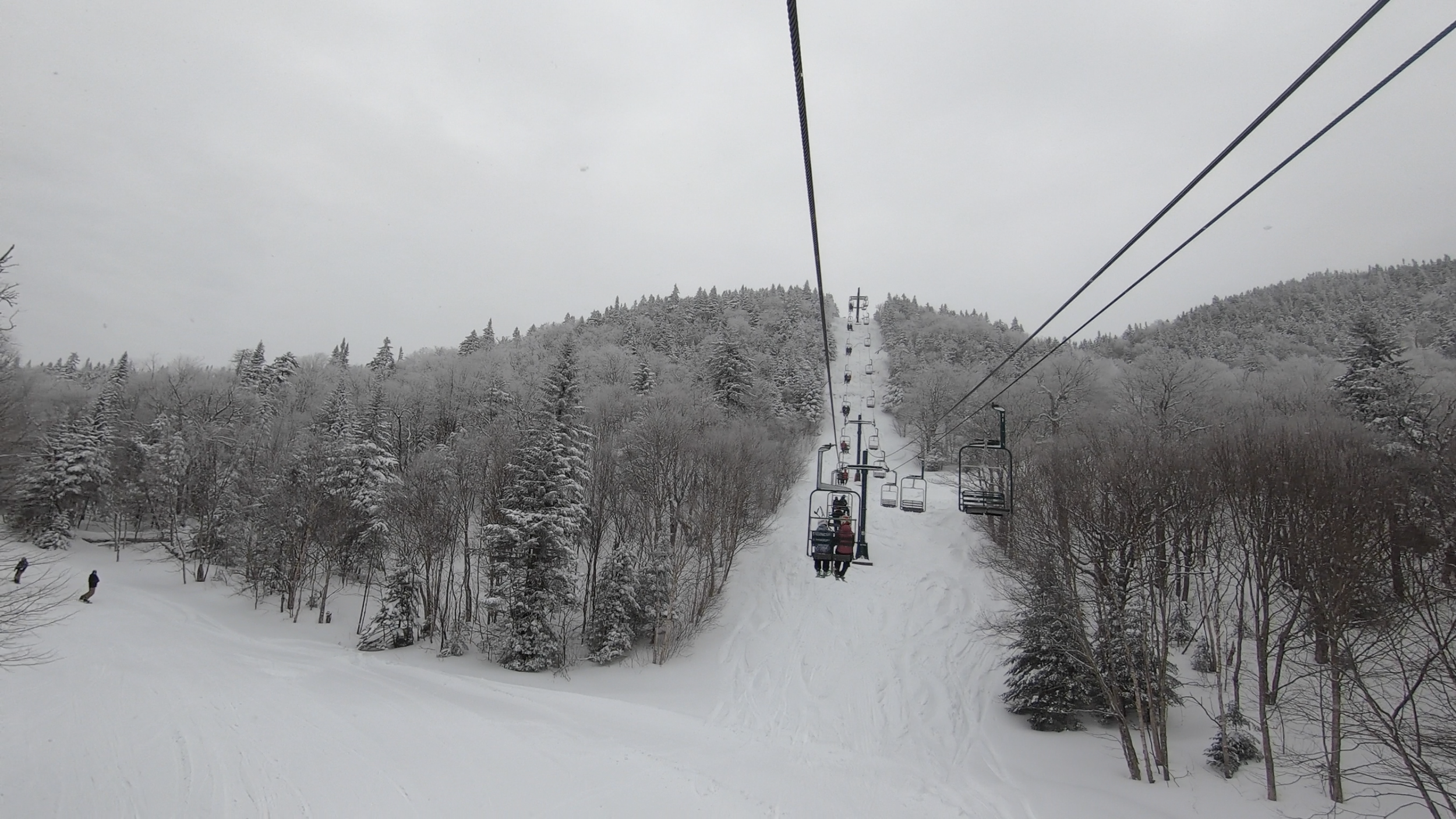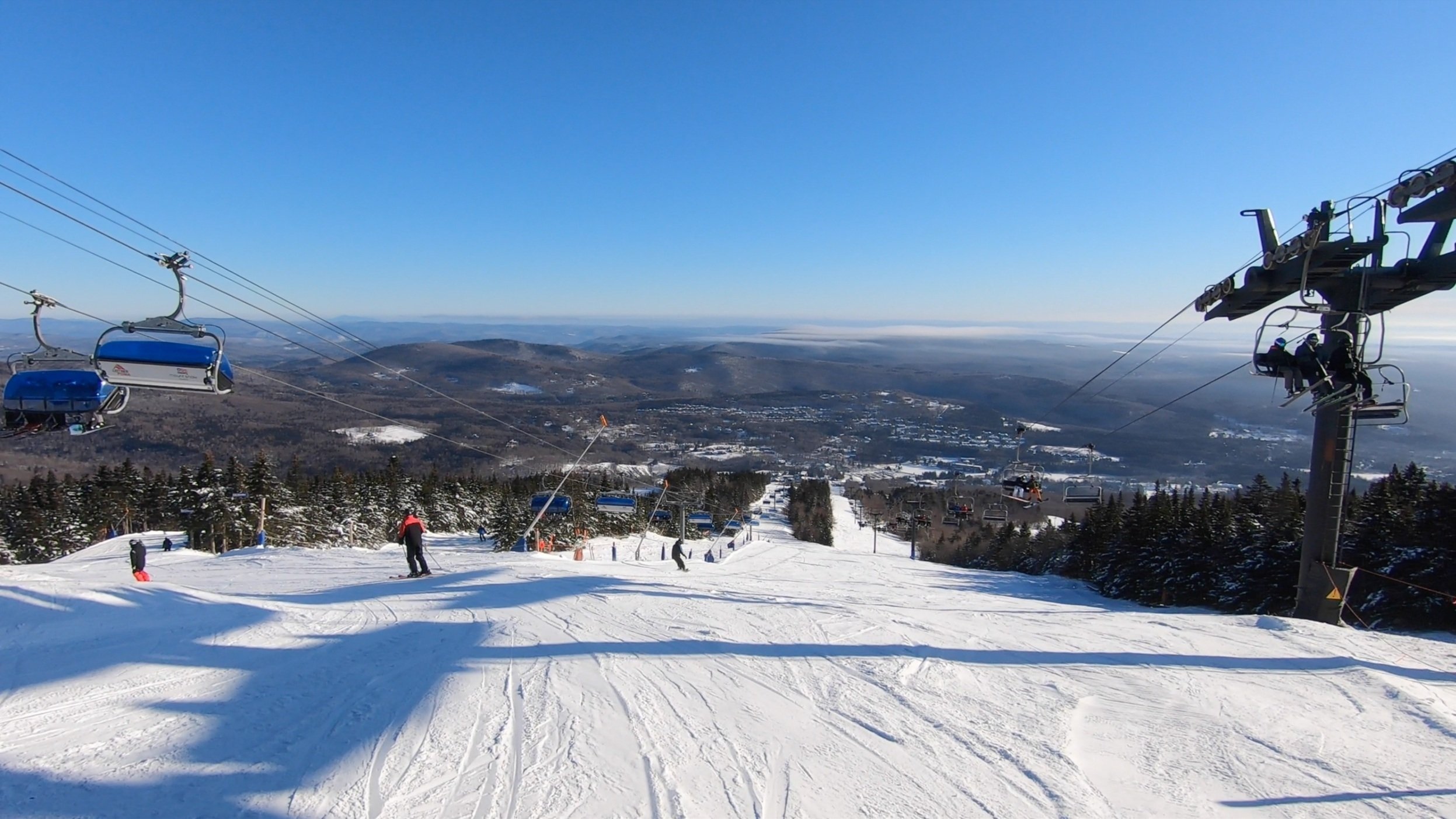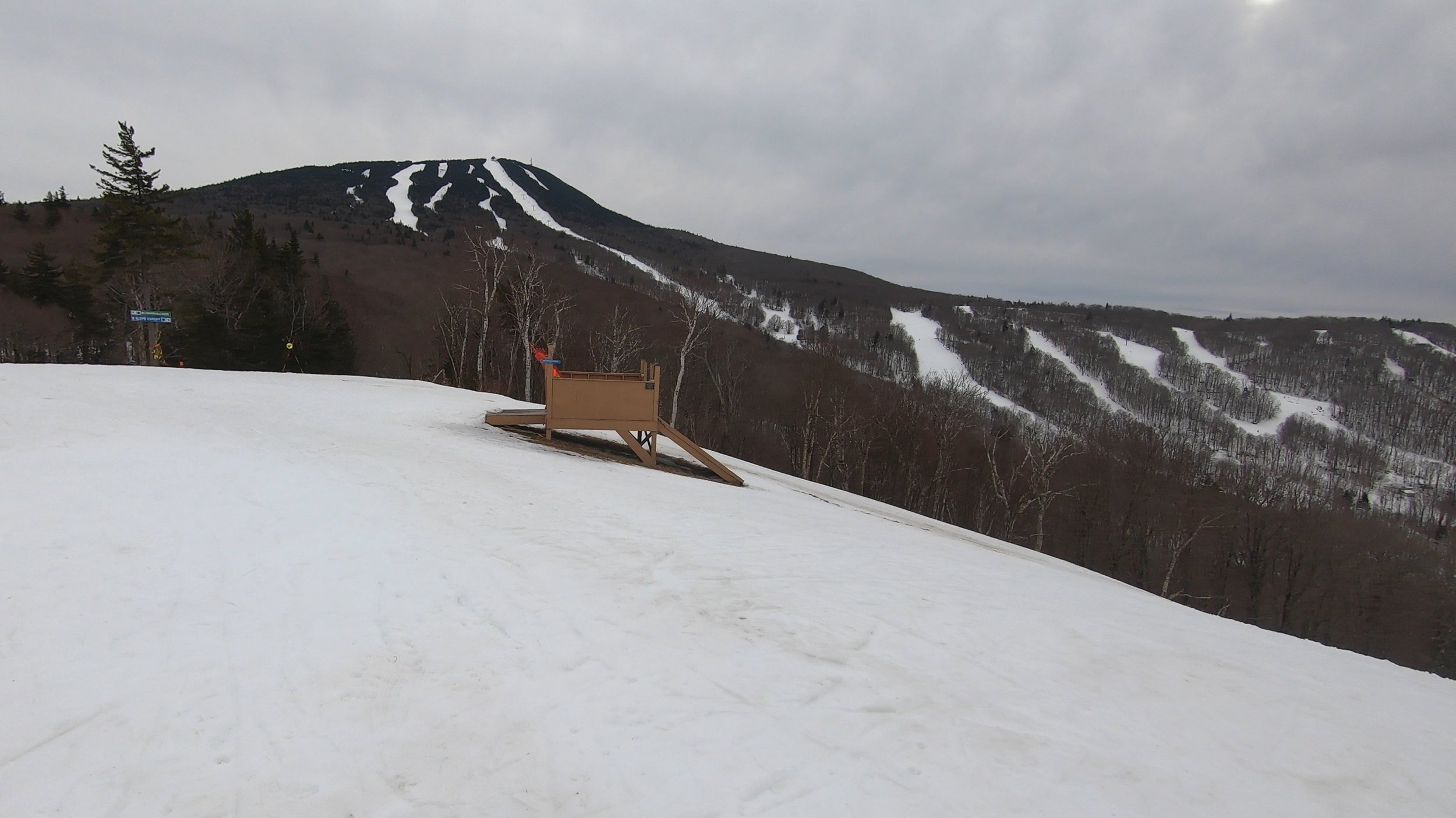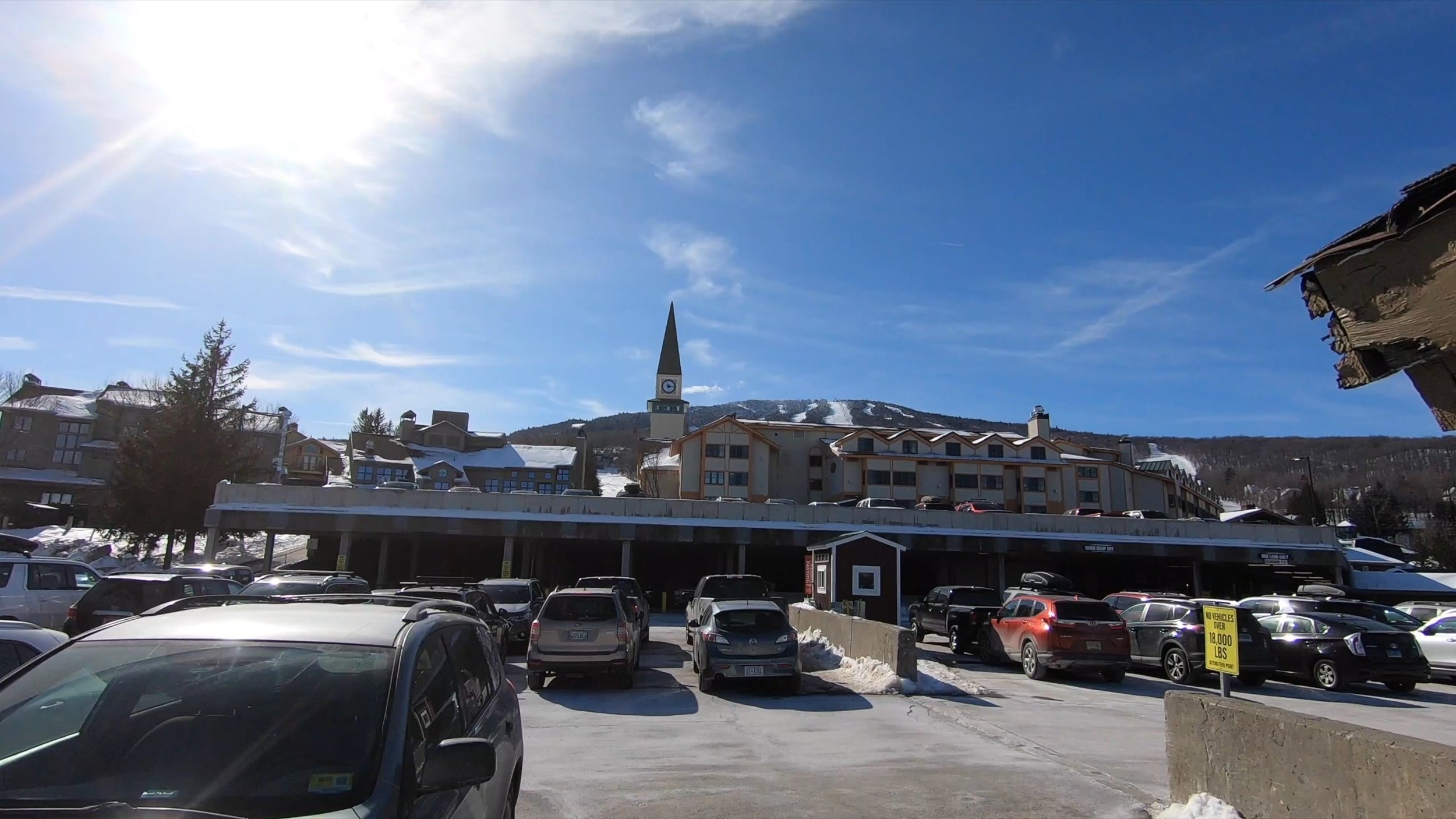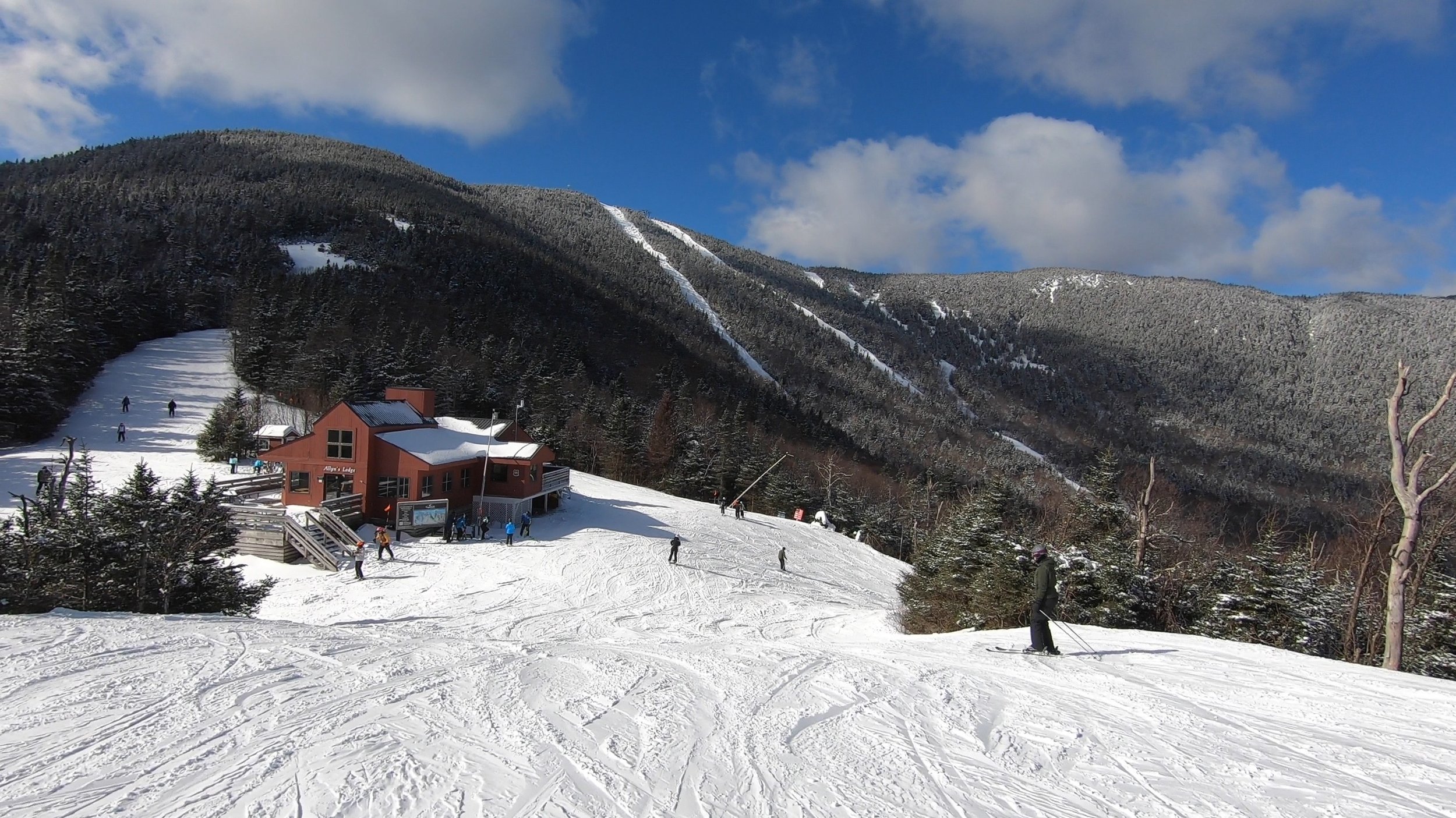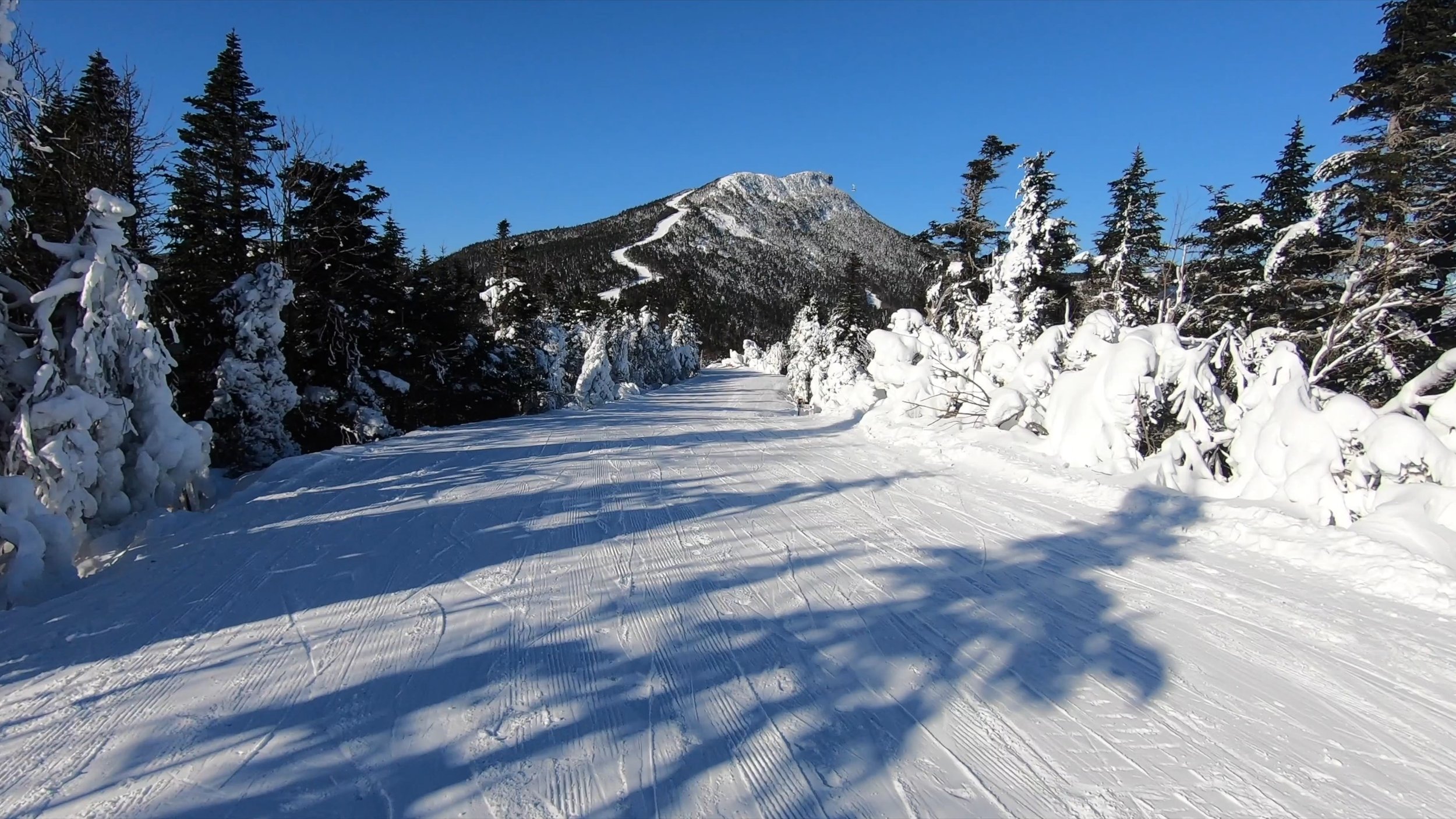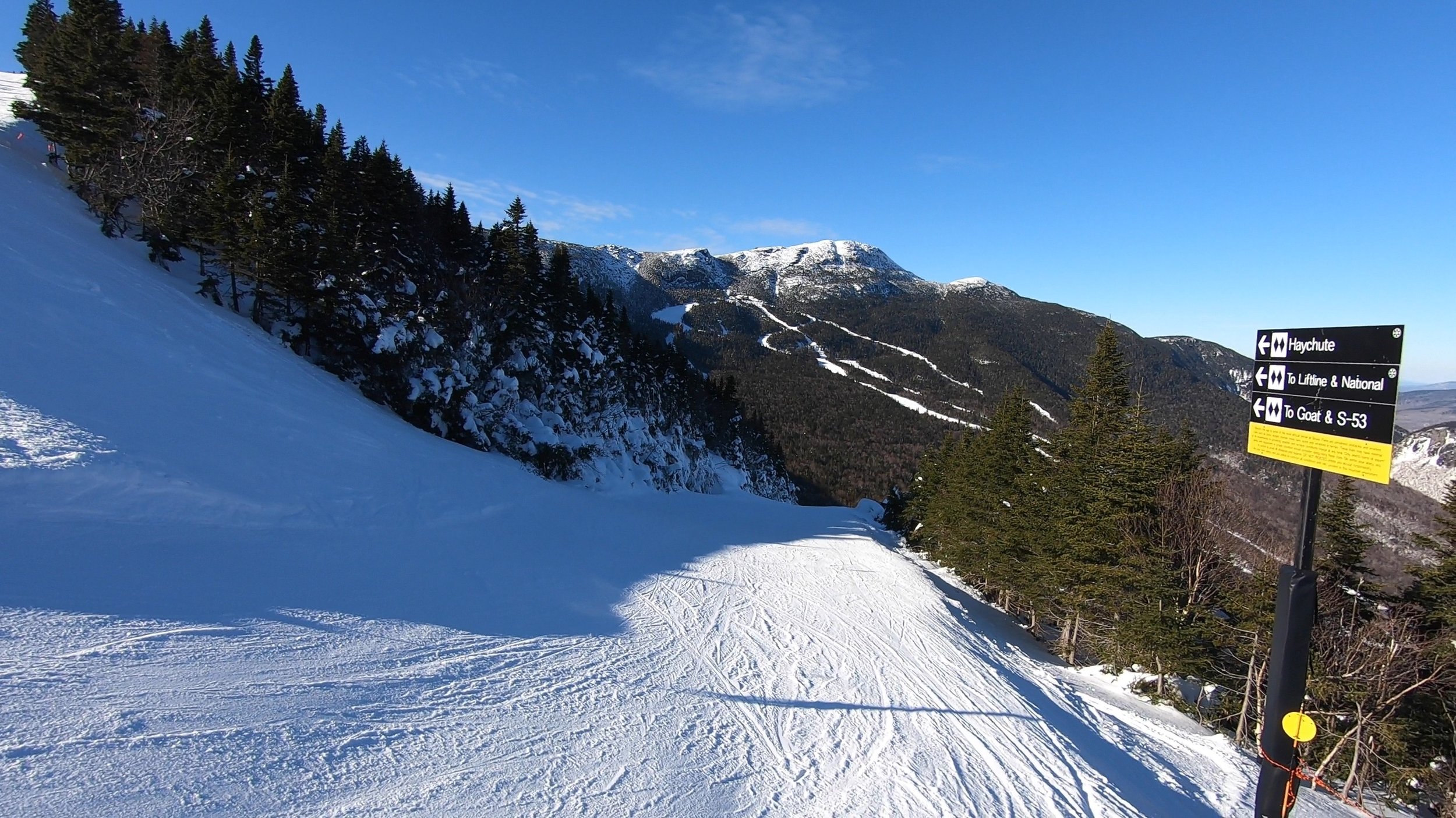Vermont Ski Resorts Ranked: 2023-24
If you’re on the East Coast and a fly-to destination is out of reach, it’s hard to beat the evergreen slopes of the state of Vermont. This Northern New England state has a lot going for it, with decently large ski resorts, slopes for all ability levels, and locations within driving distance of major metropolitan areas.
But not all Vermont ski resorts are created equally, so which ones are best?
In this article, we’ll rank the Vermont ski resort destinations in order of their overall mountain experience, and we’ll highlight the strengths and weaknesses of each one.
Before we jump in, we want to caveat the Vermont is one of—if not the—most competitive East Coast ski resort regions, and even if a resort ends up toward the bottom of this list, it still probably beats your local hill. We also want to caveat that we didn’t include certain smaller, local resorts, such as Burke, Saskadena Six, and Middlebury Snowbowl, that don’t attract much destination traffic. Enjoy!
#13: Magic Mountain
Coming in at the bottom of this list is Magic Mountain—which stands out in a lot of ways, but not all of them good. The resort features a local feel, as well as some of the most surprisingly solid tree and expert terrain in southern Vermont.
However, Magic just does not have the snowmaking infrastructure to compete with higher-end competitors, and unless it’s a powder day, thin cover is basically a given. Even some of the runs designed for beginners see variable conditions at times, which might be surprising to those who have skied or snowboarded at nearby competitors. In addition, Magic’s modestly-sized footprint suffers from a slow lift network, and the status of the Black Line Quad lift, which has been under construction for 4 years, is unclear for next season. Finally, Magic isn’t regularly open on weekdays, so it’s tough to plan a weeklong ski trip there.
Magic features impressive terrain diversity for its size, but most of its competitors offer way better infrastructure and conditions reliability. At least Magic’s lift tickets are priced fairly reasonably, with 1-day adult rates topping out at just under $100. Magic is also a member of the Indy Pass, with 2 days included on that product.
1-Day Ticket Range (Core Season):
Adult 18-69: $89-$99
Child 6-17: $79-$89
Senior 70+: $79-$89
Child 0-4: Free
Other Access Options: Indy Pass
#12: Bolton Valley
Coming up next on this list is Bolton Valley, another modestly-sized mountain—but this time, in northern Vermont.
Bolton Valley isn’t the most well-known resort in the state, but it sees surprisingly robust snow totals each winter that come close to the best mountains in the state. Bolton also rarely sees crowds, offers pretty solid tree terrain and backcountry access, and the only night skiing operation in the state of Vermont.
But Bolton Valley just isn’t large and developed enough to put up a serious fight against the best ski resorts in the state. With just a 165-acre skiable footprint, the resort is dwarfed by more popular nearby mountains, and the 1,700-foot vertical drop doesn’t make for particularly long runs. In addition, while the two most popular lifts are high-capacity quads, Bolton’s entire lift fleet is slow, making for some frigid rides on cold days. And while its natural snowfall tends to be strong, Bolton doesn’t benefit from quite the same snowmaking infrastructure as many competitors—and while operations are better than Magic’s, guests should expect perennial thin cover on many trails.
Bolton is a good choice if you want a family-friendly, low-crowd mountain with strong natural East Coast snow, but the resort is further away from major metropolitan areas than several better competitors—and for those who don’t live in the nearby city of Burlington, there are a lot more practical options out there.
Perhaps Bolton Valley’s biggest strength is its value. 1-day tickets top out at just under $100, but they’re available for as low as $40 for an off-peak weekday. And like Magic, Bolton is a 2-day member on the Indy Pass.
1-Day Ticket Range (Core Season):
Adult 18-64: $39-$99
Child 6-17: $39-$89
Senior 65-74: $39-$89
Senior 75+: $20
Child 0-4: Free
Other Access Options: Indy Pass
#11: Bromley
Next up we have Bromley, an independent ski resort in southern Vermont—and the first one on this list that’s bucked the trend of joining a mega pass.
Bromley offers a family-friendly, easy-to-navigate footprint, and while it wouldn’t exactly be our first choice for experts, there is some decently challenging mogul and tree terrain when conditions allow. Finally, Bromley’s south-facing slopes make for sunnier conditions and more pleasant temperatures than one might expect from Vermont.
But Bromley is pretty small, and its 178-acre footprint won’t be enough for more experienced skiers and riders who want a few days of terrain to explore. And while Bromley’s full vertical descent is served by a high-speed quad, the the resort is somewhat susceptible to wind, so you might find yourself spending your day on the slower mid-mountain lifts instead. Combined with the south-facing exposure, Bromley’s trails are prone to becoming icy and windswept, with snowmaking needed to keep slopes in good condition.
Bromley is great for its size, but it just doesn’t have enough terrain to beat out the other resorts on this list. 1-day tickets go for $99 no matter when you go—but there’s no child discount for kids 6 and older, so if you’re bringing your kids, you might pay a premium for this family-friendly mountain.
1-Day Ticket Range (Core Season):
Age 6+: $99
Child 0-5: Free
#10: Mad River Glen
Perhaps the most intimidating mountain in Vermont—and one that’s garnered a reputation not just in the region, but all around North America—Mad River Glen caters to expert-level skiers in an unabashed fashion.
This central Vermont ski resort, which doesn’t allow snowboarding, employs very little grooming and snowmaking and hosts some of the most demanding terrain in the state. Be it cliffs, rocks, or even frozen waterfalls, they’re not out of the question at Mad River Glen. But the quirks don’t stop there—much of the terrain on this uncommercialized mountain is served by the only remaining single chair in the lower 48 states.
However, as one might expect, the unique circumstances behind Mad River Glen’s existence make for some notable drawbacks. The lack of resiliency measures really hurt the resort’s dependability, and both precariously thin cover and significant trail closures are common occurrences after several days with no snow. Mad River Glen’s low-capacity lift setup means that while trails themselves never get too crowded, lift lines aren’t unheard of—especially for the brutally inefficient single chair. And finally, with just a 115-acre footprint, Mad River Glen is the smallest resort on this list—and with so much terrain already designed for experts, there isn’t much left over for beginners and intermediates.
Mad River Glen is an insane mountain if it’s snowed in the past few days and you can handle moguls, thin cover, and the craziest obstacles the East Coast has to offer, but for more traditional vacationers, there are definitely better choices. The resort has no pass affiliations and limits lift ticket sales, but rates are still pretty reasonable, topping out at $110 at the window. In-advance tickets exist for significant discounts, but we wouldn’t commit to skiing here without a sense of the conditions first.
1-Day Ticket Range (Core Season):
Adult 19-64: $65-$110
Child 6-18: $54-$89
Senior 65+: $54-$89
Child 0-5: Free
#9: Mount Snow
Moving on to the first decently-sized ski resort on this list, Mount Snow offers over 600 acres of terrain, extensive snowmaking, and six high-speed lifts in a convenient southern Vermont location. The resort boasts an intuitive physical layout, with almost every trail on the mountain accessible from the summit, making it easy to find the terrain you want to ski or ride on. In addition, Mount Snow’s Carinthia and North Face areas offer very competitive freestyle and mogul terrain, respectively, for the southern Vermont region.
This all being said, Mount Snow’s strengths are no secret. The resort now has four out-of-base high-speed lifts, including one bubble lift, but the resort gets packed even on typical weekends, and guests should expect lengthy waits despite the strong uphill capacity. While some areas offer great views, the resort doesn’t feel isolated at all, with particularly high skier density on popular trails during peak times. Finally, while some of Mount Snow’s terrain does stand out, neighboring trails feel incredibly similar to one another, making the resort feel less engaging than its acreage measurement would have you believe.
Mount Snow is an easy choice for a convenient weekend getaway, but it’s a known entity, and other resorts offer more interesting terrain, higher snow totals, and fewer crowds. Mount Snow’s regular 1-day ticket rates are outrageous, topping out at $169 at the window—so if you plan to ski or ride here, be sure to pick up an Epic Season or Day Pass product before they’re off sale in early December.
1-Day Ticket Range (Core Season):
Adult 18-64: $119-$169
Child 7-17: $90-$128
Senior 65+: $105-$149
Child 0-6: Free
Other Access Options: Epic Full, Local, and Day Passes; Northeast Value and Midweek Passes
#8: Okemo
Next up on this list we have fellow Vail-owned mountain Okemo, which sits on the border of south and central Vermont and offers a decently large footprint as well. Okemo stands out with unique-feeling terrain for beginners and intermediates, with five different mountain peaks and excellent grooming operations. In addition, Okemo’s lift fleet generally impresses, with more high-speed lifts than slow ones and two bubble chairs extending up the main mountain.
However, crowds at Okemo have gotten way worse since Vail took over. The resort sees annoying long lift lines on most weekends and holidays—and while the primary lifts might be fast, guests might find themselves spending more time waiting in line than riding them.
But lift lines aren’t the only place where Okemo has taken a back seat in recent years. On-mountain restaurants could really use some work, and while snowmaking is still good, other resorts in the state have become more reliable in this regard over the past few years. And finally, Okemo has never really been good for advanced and expert skiers and riders; there’s very little that’s not groomed—even when it comes to black-diamond terrain—and while steep pitches do exist, they’re very brief and few and far between.
Okemo hasn’t lost its family-friendliness, but it’s taken a couple of steps back in the Vermont destination scene over the past few years. 1-day lift ticket rates are even crazier than Mount Snow’s—topping out at an astounding $189—so if you want to visit, be sure to get your Epic-branded product before December.
1-Day Ticket Range (Core Season):
Adult 13-64: $127-$189
Child 7-12: $97-$189
Senior 65+: $112-$166
Child 0-6: Free
Other Access Options: Epic Full, Local, and Day Passes; Northeast Value and Midweek Passes
#7: Pico
Up next on this list we have what might be the most overlooked mountain in the state of Vermont. Pico sits right next to the behemoth Killington ski resort (which happens to own it), and as a result, most people in this central Vermont area pass over Pico and head straight to its larger neighbor. But this phenomenon brings a substantial benefit to Pico: low crowds, even during peak times. The resort is the place to go to escape the waits other resorts are plagued by, and with two high-speed quads, you get a decent lift fleet as well. At just over 250 skiable acres, Pico is by no means the largest ski resort in Vermont, but there’s an enjoyable mix of terrain, especially for visitors ranging from intermediate to advanced.
Pico’s lack of popularity comes with some downsides, and the resort only operates Thursday through Monday, opting to remain closed on off-peak Tuesdays and Wednesdays. In addition, while Pico as a whole never has many people on it, there’s only one intermediate trail down from the summit, so guests should be prepared for a bit of congestion in that area.
Pico is too small and not quite diverse enough to compete with the top tier of Vermont ski resorts, but it’s a good mountain to keep in mind if you’re looking to avoid the crowds during a peak time. Pico is on the Ikon Pass, including the 2, 3 and 4-day Session Pass offerings, and while lift tickets top out at $119, they can be had for substantial discounts if booked in advance or during off-peak times.
1-Day Ticket Range (Core Season):
Adult 18-64: $60-$119
Child 7-17: $46-$92
Senior 65+: $51-$101
Child 0-6: Free
Other Access Options: Ikon Full, Base, and Session Passes
#6: Smugglers’ Notch
One of the few true remaining old-school mountains in Vermont, going to Smugglers’ Notch feels like you’re stepping foot back in the 1960s.
The resort features very little buildup, amazing views, and classic, narrow Vermont slopes that have become harder to come by at more commercialized mountains. In addition, Smugglers’ Notch’s northern Vermont location furnishes it with strong natural snowfall totals for the region each winter, allowing for some particularly hairy terrain—especially when it comes to glades—to fill in. This includes Black Hole, the only triple-black-diamond rated ski trail on the East Coast; it’s debatable whether this is actually the hardest trail in Vermont, but there’s no doubt it’s an experts-only affair.
However, Smugglers’ Notch’s old-school setup does come paired with some far-reaching consequences. All of the resort’s chairlifts are absolutely ancient fixed-grip doubles, and some of the rides take over 15 minutes, which is basically unheard of nowadays elsewhere in the state. Smuggs’ crowds aren’t bad, but the low lift capacity means that lines do still build up, meaning that you’ll be waiting during peak times on top of the already painful ride times. And while the resort’s natural snow totals are much stronger than many competitors further south in the state, about a third of terrain does not have snowmaking, meaning that significant trail closures are common during less-than-ideal weather patterns.
Smugglers’ Notch is also great or terrible for beginners depending on who you ask; the resort’s green terrain is secluded on a wholly different mountain than most of the intermediate and expert slopes, and while this provides a isolated environment, the connector trails to and from this area—which also happen to provide the only access to and from the main base—are some of the flattest runs we’ve ever been on.
Smugglers’ Notch offers legitimately good East Coast terrain, but it’s held back by its archaic infrastructure. While the resort doesn’t have any pass affiliations, at least lift tickets are reasonable. 1-day lift tickets top out at $109 per day, but they’re available for much more economical rates if you book in advance.
1-Day Ticket Range (Core Season):
Adult 19-64: $65-$109
Child 6-18: $50-$85
Senior 65+: $50-$85
Child 0-5: Free
#5: Stratton
Up next we have Stratton—which, despite being in southern Vermont, looks to have a pretty solid resume on paper.
The resort boasts a 670-acre skiable footprint, high-speed lifts in every area that’s not designed for beginners—including a gondola and several helper chairs—and exceptional snowmaking and grooming operations. Stratton also boasts what might be the most extensive on-mountain signage of any ski resort we’ve ever tried, making it hard to get lost if you’re paying even a modicum of attention.
But Stratton just feels blander than comparably-sized competitors further north in the state. Neighboring trails come off as pretty similar to one another, and the flat, round summit makes the resort feel like more of a massive hill than a true mountain. Advanced mogul terrain and steep groomers aren’t bad, but none of Stratton’s trails are particularly long, meaning you’ll have to go further north for true endurance runs.
Also, Stratton goes heavy on commercial advertisement, being the one ski resort to actively promote itself on billboards in New York City, and it attracts crowds accordingly. Lines very much build up during peak times even with all the lift redundancies, and with all the people, you won’t exactly find isolation on the slopes either.
Stratton is fairly large and has impressive on-mountain infrastructure, but other resorts have way more character. The mountain is a strong choice for southern Vermont, but lift tickets are not cheap, and they go for an astounding $199 during the busiest weekends and holidays—even if you book in advance. If you want to go to Stratton and you’re not picking an off-peak weekday, an Ikon Pass product may be the way to go—but those aren’t cheap either.
1-Day Ticket Range (Core Season):
Adult 18+: $84-$199
Child 5-17: $84-$161
Child 0-4: $10
Other Access Options: Ikon Full, Base, and Session Passes
#4: Sugarbush
Coming up next we have Sugarbush, a sizable ski resort in the Mad River Valley of central Vermont.
Sugarbush’s terrain makes it one of the most distinctive ski resorts in the state, with diverse, unique-feeling slopes, naturally beautiful scenery, and a local feel. The resort also features one of the longest vertical drops in Vermont and some of the toughest terrain in the state, including especially steep, narrow trails in its formidable Castlerock zone.
However, Sugarbush isn’t perfect. The resort’s snowmaking is good, but operations are limited on expert trails, resulting in inconsistent terrain openings when conditions aren’t good. In addition, beginner terrain is limited, with only a handful of options for this ability level across the footprint. And finally, Sugarbush isn’t actually one continuous resort: instead, it’s made up of two distinct zones that are a few miles away from another, and while the high-speed quad connecting them is pretty cool, it operates pretty sporadically, meaning it’s tough to ski the full resort as a singular entity.
If you’re looking for a local feel and some breathtaking terrain, Sugarbush is hard to beat, but there are more modern and family-friendly options out there. Sugarbush’s lift tickets range from quite pricey to prohibitively expensive, so if you want to ski or ride there, be sure to check out the Ikon Pass access options before they’re off sale in early December.
Also, there are no child discounts for kids 6 and older on Sugarbush-branded ticket and day pass products, so you’ll be paying a premium versus other in-state mountains for a family trip.
1-Day Ticket Range (Core Season):
Age 5+: $129-$189
Child 0-4: Free
Other Access Options: Ikon Full, Base, and Session Passes
#3: Jay Peak
Next up on this list is Vermont’s northernmost resort, Jay Peak.
Jay Peak may not be the largest resort in the world, but it offers by far the highest average snow totals in Vermont, often seeing several more inches of natural snow than competitors further south. And Jay Peak’s snow cover also helps it stand out terrain-wise, with some of the best glade and expert terrain around all of the East Coast. And Jay Peak boasts a rather unique lift setup, with the only aerial tram at a ski resort in the state.
But Jay Peak’s natural strengths are weighed down by some serious drawbacks. While snow totals are impressive, the resort is cold and windy, with lift holds common throughout the season. Snowmaking operations lag behind competitors, and combined with the wind-exposed footprint, slopes are prone to windswept, icy, and thin cover conditions if it hasn’t snowed in the last day or two. And while the tram is cool, it’s not exactly practical to lap due to its low capacity, and the other lifts on the mountain are either slow or within a wind funnel. Finally, beginner terrain is extremely limited, only existing in lower-mountain areas.
Jay Peak is the best in Vermont for natural snow and hard to beat for unique advanced and expert terrain, but other resorts offer a more reliable, well-rounded package. At least Jay Peak offers what’s probably the best lift ticket experience-to-value ratio on this list, with 1-day adult rates topping out at $129 and often going for much lower than that.
Jay Peak is also the best mountain in Vermont on the Indy Pass, with two days of unrestricted access included on that product.
1-Day Ticket Range (Core Season):
Adult 19-64: $99-$129
Child 6-18: $77-$105
Senior 65+: $77-$105
Child 0-4: $34-$49
Other Access Options: Indy Pass
#2: Stowe
One of the longest-running names in the East Coast ski scene, Stowe boasts several traits that make for a well-rounded Vermont ski vacation. The resort offers enjoyable terrain for all ability levels, ranging from mellow cruisers to dauntingly steep, narrow expert runs, and also stands out with reliable snowfall and high-speed lifts. In addition, two of its biggest problems, easy egress from a key base lodge and nonexistent high-speed lift access to beginner terrain—were solved last year with a new six-pack chairlift.
However, Stowe has a few issues. While improved from just after COVID, guests should expect significant lift lines on weekends and holidays—and recent parking policy updates have gotten rid of all free parking during these times except in extremely inconvenient lots. And while sufficiently sized for most, Stowe’s 485-acre skiable footprint isn’t quite as big as some competitors. Finally, lift ticket prices are completely insane, topping out at $219—the highest rate in the state—so if you want to go, make sure to pick up an Epic season or day pass product before early December.
But despite its problems, Stowe makes a very compelling case for itself among Vermont destinations. In fact, we’d take a vacation to Stowe over every other ski resort in the state—except one.
1-Day Ticket Range (Core Season):
Adult 13-64: $151-$219
Child 5-12: $128-$186
Senior 65+: $140-$204
Child 0-6: Free
Other Access Options: Epic Full, Local, and Day Passes; Northeast Value and Midweek Passes
#1: Killington
That’s right, Killington is our pick for the best ski resort in the state of Vermont.
On the surface, Killington already seems like the obvious choice for the top of this list: at 1,500 acres, it boasts by far the largest skiable footprint of any ski resort not just in the state, but on the entire East Coast. But the strengths go further than that, and Killington stands out with a modern lift fleet, including two gondolas and a bubble six-pack, as well as what might now be the most resilient snowmaking setup in the state. Killington offers a wide range of terrain for all abilities, and especially stands out for freestylers with its array of progression-oriented Woodward terrain parks. Finally, Killington’s access road has the best nightlife scene in Vermont, with plenty of bars and restaurants to choose from.
This all being said, Killington is not a perfect mountain. The resort is a pain to get around, with a footprint that’s more likely than not to get you lost at some point on your trip. In addition, Killington feels pretty commercialized, with lots of on-mountain buildup—especially at the summit—and intense crowding during peak times. And finally, despite Killington’s advertised 3,000-foot vertical drop, very few trails actually extend down that full distance, and many other resorts offer longer and harder terrain. But if you’re looking for a Vermont ski vacation that does it all, Killington is hard to beat. Lift ticket prices top out at $189 if you buy the day of, but they’re somewhat lower if you buy in advance, and you can access Killington through an Ikon product as well.
1-Day Ticket Range (Core Season):
Adult 18-64: $119-$189
Child 7-17: $92-$146
Senior 65+: $101-$161
Child 0-6: Free
Other Access Options: Ikon Full, Base, and Session Passes
Final Thoughts
So there you have it—that’s our official ranking of the destination ski resorts in the state of Vermont! Here’s a full breakdown of the overall mountain scores for each resort, along with their valuations in each category.
None of these ski resorts are perfect, and even the best ones on this list have their fair share of problems, be it crowds, difficult-to-learn footprints, or lackluster resiliency measures. And at any of these resorts, you could always risk a rain, wind, or ice spell, especially earlier on in the season. But you’re giving up way less at some resorts than others, and for the vast majority of East Coast travelers, the mountains at the top of our rankings will make for solid multi-day trips.
How’d we do? Would you change the order? We’d love to hear from you, so if you have any thoughts, hit us with a comment below!
For more information on these resorts, check out our comprehensive Vermont mountain reviews. If you’re interested in seeing how they compare to other similar mountains, check out our East Coast and overall rankings.


